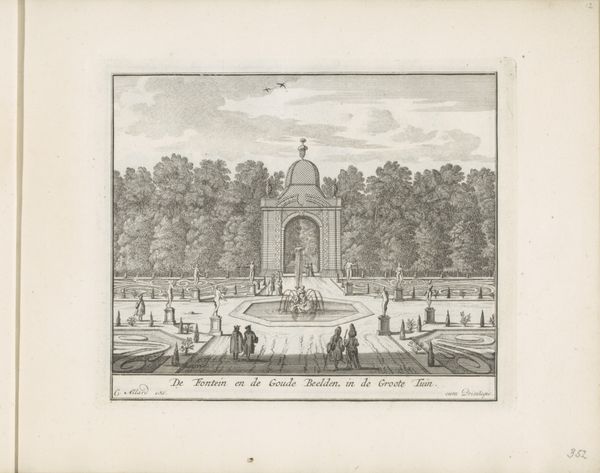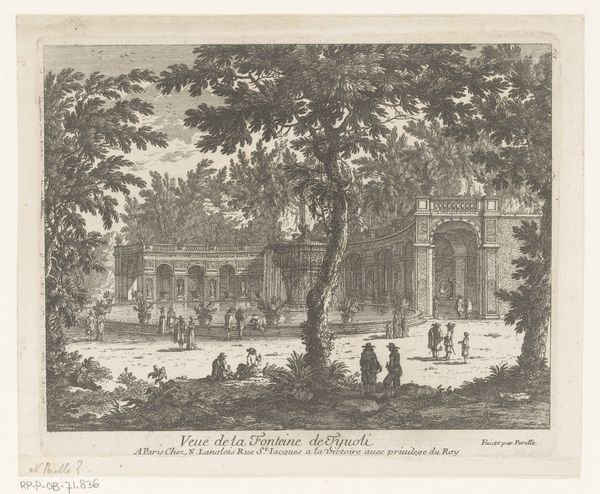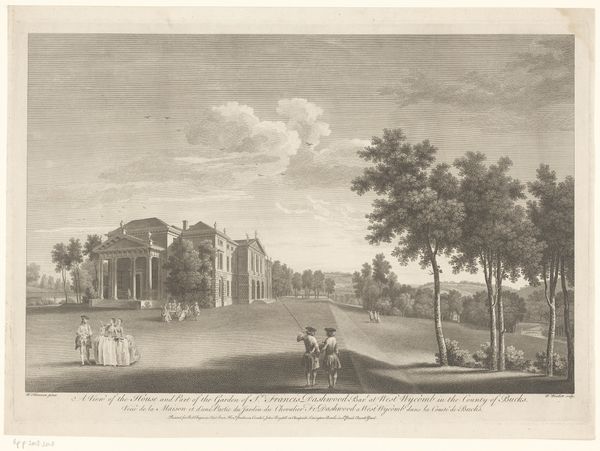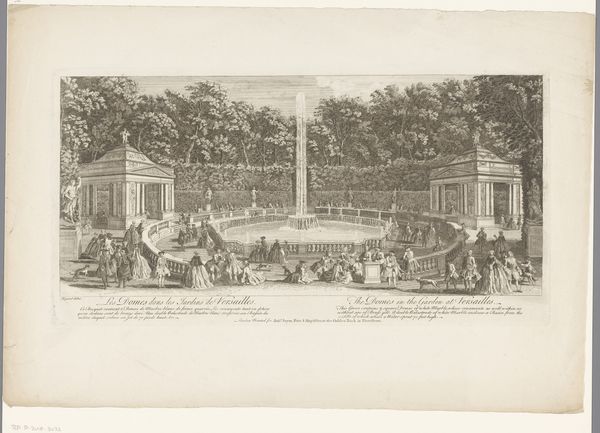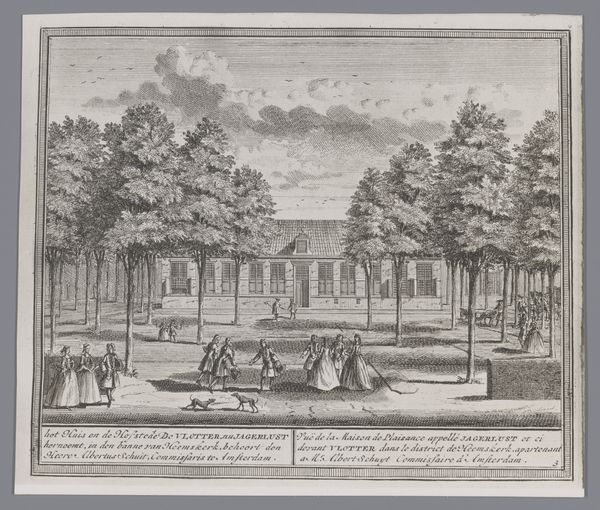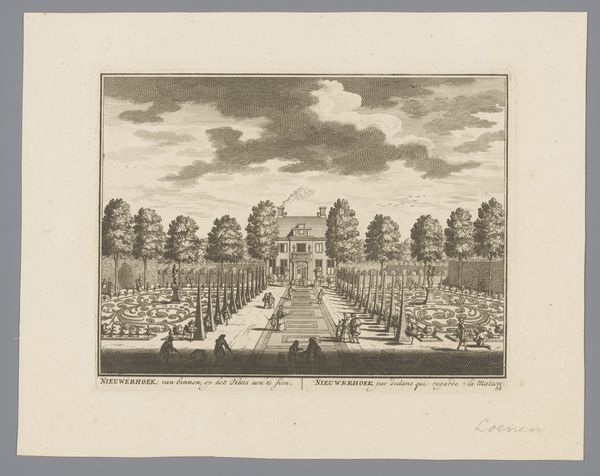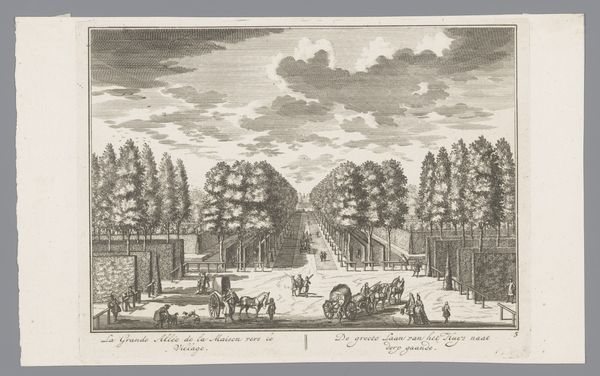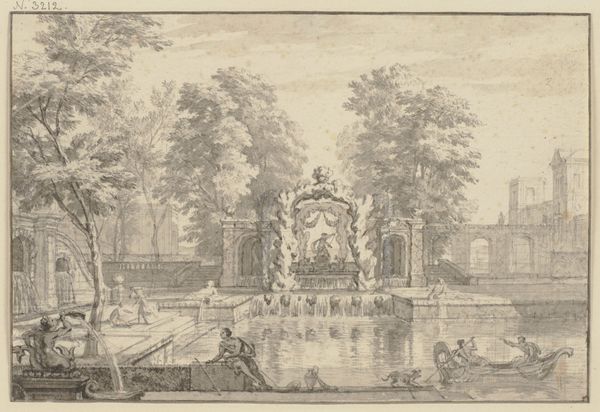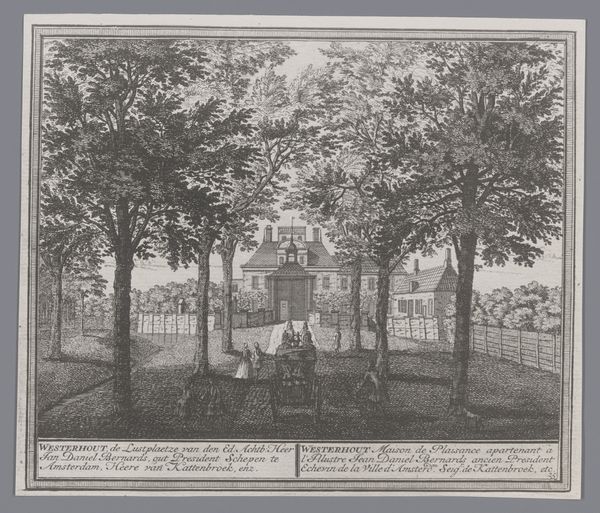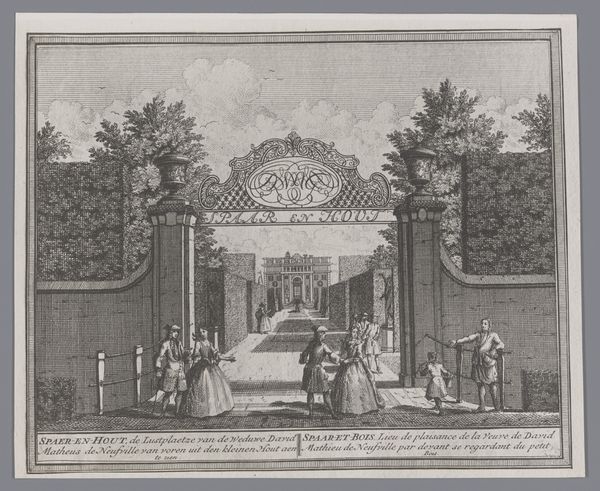
print, paper, engraving
#
dutch-golden-age
# print
#
old engraving style
#
landscape
#
paper
#
cityscape
#
engraving
Dimensions: height 162 mm, width 213 mm
Copyright: Rijks Museum: Open Domain
This print, by Daniël Stopendaal, presents a view of a tea house in the garden of Slot Zeist, rendered with remarkable precision. It’s an etching, a process involving coating a metal plate with wax, drawing a design to expose the metal, and then immersing it in acid. The acid bites into the exposed lines, which are then inked and printed. The etching technique lends itself well to capturing the textures of the manicured garden. Notice the contrast between the rigidly shaped trees and the soft foliage, achieved through varied line work. This wasn't just about aesthetics; the very act of shaping nature into geometric forms, as depicted, reflected the owners' wealth and control. Consider the labor involved in maintaining such a garden – the gardeners, barely visible, yet essential to the scene. Stopendaal’s print invites us to consider the broader social context of leisure and labor in the 17th century. It reminds us that even the most refined artistic creations are rooted in the material conditions and social relations of their time.
Comments
No comments
Be the first to comment and join the conversation on the ultimate creative platform.

